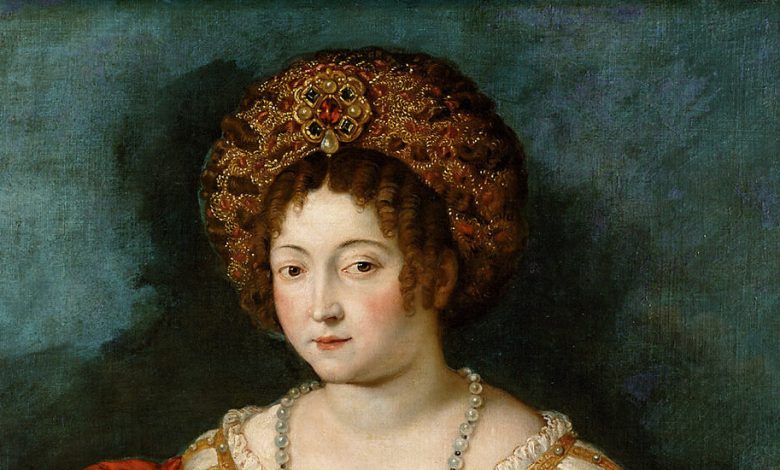16th-Century Beauty Secrets, Revealed

HOW TO BE A RENAISSANCE WOMAN: The Untold History of Beauty & Female Creativity, by Jill Burke
Shapewear. Stretch mark remedies. Nose jobs. Eyebrow shaping. These things are not just preoccupations of ours, but also concerned the women of the Renaissance.
In “How to Be a Renaissance Woman: The Untold History of Beauty & Female Creativity,” Jill Burke, a professor of Renaissance studies at the University of Edinburgh, brings us a breezy and readable portrait of 16th-century Italy through the lens of beauty standards and practices.
One source that inspired the book was Giovanni Marinello’s “The Ornaments of Ladies,” first published in Venice in 1562, which included 1,400 recipes for face, hair and body. Burke does some of her own translations from Italian and even adapts recipes for those readers interested in trying out their own distilled broad-bean flower water.
The 16th century, Burke notes, is a time, like the one we are living through now, when technology and visual culture collided. Developments in single-point perspective, draftsmanship and anatomy all influenced portraiture. And body ideals were changing from the gothic paragon, with narrow shoulders and big hips, to soft hourglasses, preferably complete with pale skin and golden curls.
There are plenty of noblewomen in these pages — their stories are usually the best documented — but Burke makes an effort to talk about women of many kinds: domestic help, peasants, widows, courtesans and all manner of sex workers. (The names mentioned also function as a great source for anyone in your life looking for a memorable and uncommon baby moniker. Consider Tullia, Lucrezia, Moderata, Isotta!)
Whatever the subject, the expectations are familiar: Women were held to unreasonable standards. “Women’s bodies,” Burke writes, “are presented as forever-unfinished projects, to be constantly improved and worked upon.” She quotes a tract from 1598 that reads, “If one sees a poor woman who has six pennies to her name, four of them are on her face.”
A woman of that era had no choice but to think about her appearance. “Looking good,” as the author puts it, “was important for women in a world where the legal rights and earning power of men meant that influence was often gained through manipulation, where beauty could raise your special status.” This was one area of their lives where they had, if not freedom, at least some agency. Women in this book are economically reliant on men, constantly under threat of violence, accused of witchcraft and killed.
Burke speculates, too, that participating in rituals of bathing (which, in that era, was less about rinsing the body than rubbing it with cloths), cosmetics, skin care regimens — the whole of beauty culture — created a place for women to bond, and was a key part of their social lives. Crucially, it gave them a break from “the often violent and sneering menfolk.”
Then as now, there was no exact measure for how much participation in beauty was considered just enough — and how much would be judged as vain. A woman who spent visible time on her toilette could risk being considered to be guileful — by trying to deceive a man with cosmetics.
No-makeup makeup was all the rage in Renaissance Italy. “Artifice is acceptable” in this climate, says Burke, “but admired when concealed, when it is done so well that you cannot see it.” The contemporary feminist author Lucrezia Marinella wrote, “It is unworthy and repulsive to cover the face with thick coverings of red and white.”
The details are fascinating. The main challenge for this reader is keeping track of the many, many women mentioned, whose names and lives often receive just a few sentences or pages. Burke would have benefited from chiseling more of a narrative from her copious research, and including fewer rapid-fire anecdotes. (Then too, it would have been nice for her to step outside of Italy and give her opinion on the much-debated white makeup and blush used by Queen Elizabeth I.)
The real shock of the book is not what’s unfamiliar, it is how much of it seems to mirror today’s obsessions and controversies. Yes, some of the treatments and rituals read as unusual to us now, involving goat fat, marrow, bran and bloodletting. Some ingredients, like mercury and arsenic, are toxic in quantity (but were employed nonetheless for skin lightening or other cosmetics) and would not be used commercially today. But other things — how much depilation to engage in; “breast bags,” a.k.a. bras; labiaplasty; lightening the hair and skin; as well as gender transitions for men and women — could and do fill our brains, our conversations and our feeds.
Maybe we’re the truly out-there ones. After all, we are living in a time of so-called Looksmaxxing online and attempts at changing the jaw shape via mewing and lymphatic drainage massage. We have neuromodulators and fillers and cryofacials. Basically, nothing our Renaissance cousins did in the name of beauty would shock anyone on TikTok.
HOW TO BE A RENAISSANCE WOMAN: The Untold History of Beauty & Female Creativity | By Jill Burke | Pegasus | 318 pp. | $28.95




